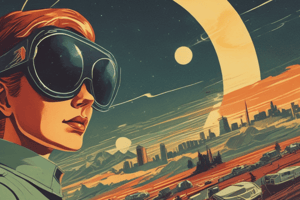Podcast
Questions and Answers
Match the following equipment with the correct statement:
Match the following equipment with the correct statement:
Camera lens, binoculars, telescope without solar filter = Instantly causes severe eye injury when viewing the Sun Pinhole projector = Projects an image of the Sun onto a nearby surface for safe viewing Eclipse glasses or handheld viewer = Should be inspected for damage before use Cardboard box, white sheet of paper, tape, scissors, aluminum foil = Materials needed to make an eclipse projector
Match the following actions with the correct precaution:
Match the following actions with the correct precaution:
Looking at the Sun directly through a camera lens = Will cause serious eye injury even with eclipse glasses Supervising children using solar viewers = Important safety measure to ensure proper usage Using an indirect viewing method = Does not involve looking directly at the Sun for safety Making a pinhole projector = Safe way to view the Sun's image without direct exposure
Match the following descriptions with the correct method:
Match the following descriptions with the correct method:
Total solar eclipse phase = Only time when it's briefly safe to look at the fully blocked Sun without eye protection Indirect viewing method = Involves using a device like a pinhole projector to view the Sun's image safely Looking at projected image of the Sun = Safe way to observe the Sun's shape and movement Inspecting eclipse glasses before use = To ensure there are no damages that could harm your eyes
Match the following eclipse safety precautions with their correct descriptions:
Match the following eclipse safety precautions with their correct descriptions:
Match the following guidelines for using binoculars or telescopes during an eclipse with their correct explanations:
Match the following guidelines for using binoculars or telescopes during an eclipse with their correct explanations:
Match the following post-totality precautions with their correct instructions:
Match the following post-totality precautions with their correct instructions:
Flashcards are hidden until you start studying




